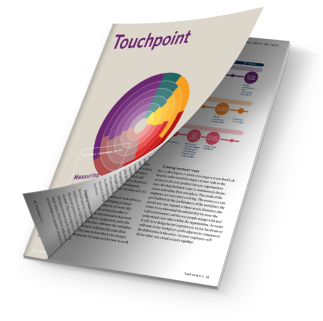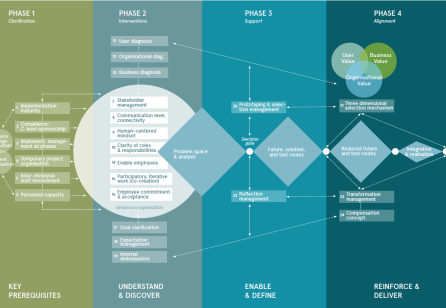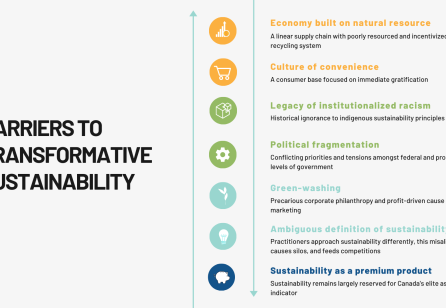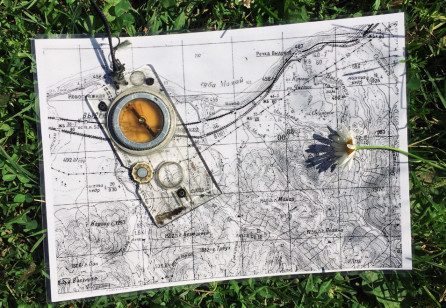Last year the SDN launched the first Service Design Impact Report dedicated to the topic of the public sector. Due to its success and enthusiastic reception, the next two editions are already in the making.
Aline Alonso, the manager of the SDN Impact Report series, and Zeynep von Flittner, an Impact Report collaborator, had the opportunity to interview Anne Stenros, the Chief Design Officer (CDO) of Helsinki, about her vision of the design impact in the city of Helsinki. Anne sees the city as an organisation and her objective is to to utilise design knowledge and enforce an experimentation culture among the city leaders.
Aline Alonso and Zeynep von Flittner: The city of Helsinki is undergoing a lot of changes. What is the role and the value of design in these transformations?
Anne Stenros: The city of Helsinki wants to renew the working culture and the leadership in the city. As a CDO, I have introduced something like a ‘Service Experience Camp’ to the top leaders of the city. They have really enjoyed the idea of small, agile, fast-speed workshops with templates that they can fill in by themselves or as a group. These have been very valuable tools to spark strategic discussions.
I believe one very important tool of design is to make futures visible. From my experience, if we only use numbers or text, the discussions tend to be very abstract and 'un-emotional'. However, if we use any type of visualisation, for instance scenarios and personas, it enables the people present in those meetings to use their empathic skills too. In order to understand better how the future is going to be. This way we will not be talking only about hard numbers but values too; ‘what kind of future we would like to see?’
How did these ‘Service Experience Camps’ work?
To open up the discussion about the future transformational trends, we created a foldable map with four scenarios for Helsinki by 2030, seeing the city as a civic platform. It was based on the idea that in the future, more and more is going to happen either in collaboration with citizens or as a bottom-up activity. The aim was to discuss the presence of this collaborative environment in the city. For example, in the scenario of the ‘Resilient Welfare City’, the collaborative environment almost doesn’t exist. On the other hand, in the ‘Civic Sharing City’ scenario, things happen in co-production in a very much actively-collaborative involvement. These parallel views can be combined, as all of them will happen eventually in the future. And serve as a base for discussion for the city officials and city leaders.
We were looking for the different functions of the city, such as placemaking, lifelong learning and cultural life. With the aim to create the best citizen experience. We were looking for the generation of value, functional, emotional and also life changing values that would deliver real social impact.
Design can support citizen democracy, and that is the biggest driver when it comes to the city’s organisation in the future. Cities have been closed organisations, but they must open up themselves and become platform organisations in the future, where each independent unit will become more agile and collaborative. It will take some time, depending on the cultural and social context of each city, but I believe this transformation is inevitable.
The activities and methods you described are very similar to service design. Do you use the term service design to refer to them?
I would rather refer to it as strategic design because it didn’t follow the service design process ‘by the book’. It was more focusing on using design to get the people out of their comfort zone, than in a final service outcome. And this was possible to see in the faces of the civil servants during the workshops. In the first hour they were a little bit confused. Their expectation of a workshop was that they would sit and listen to somebody, and now we put them in the centre of the action. But soon they got into the flow and got really engaged; much more than with top-down approaches.
How does the use of these design methods impact the work of the civil servants and city leaders of Helsinki?
I heard from different departments that they are using this type of approach in their own strategic discussions. That shows that the use of the methodology is very valuable for them.
We had ten workshops with more than 250 people in total. The outcome was a booklet called ‘City Compass of the Future’, in which we collected a summary of the discussions. Dynamic, attractive, open and equal are some of the trends for the future of the city. In the end, we built a map pointing to what should be done at the leadership level - the steps to get to the kind of future that we want to see.
The last activity of the ‘Camp’ with the city leaders was to build a house of cards with the promises of each one of us answering the question: “What I am going to do in the coming four weeks to support the changes in the leadership level?”
We use different types of design methods and tools to inspire people to approach everyday problems in a totally different way than they have been doing. And they enjoy it because it opens up new avenues. Rather than discussing about numbers – for example, “If we have these many people, how many houses we need to build?" – the discussion changes to, “If we need more housing, how can we ease the regulations to make it happen easier and faster?”









Share your thoughts
0 RepliesPlease login to comment